Zhiyu Chen
RescueLens: LLM-Powered Triage and Action on Volunteer Feedback for Food Rescue
Nov 19, 2025Abstract:Food rescue organizations simultaneously tackle food insecurity and waste by working with volunteers to redistribute food from donors who have excess to recipients who need it. Volunteer feedback allows food rescue organizations to identify issues early and ensure volunteer satisfaction. However, food rescue organizations monitor feedback manually, which can be cumbersome and labor-intensive, making it difficult to prioritize which issues are most important. In this work, we investigate how large language models (LLMs) assist food rescue organizers in understanding and taking action based on volunteer experiences. We work with 412 Food Rescue, a large food rescue organization based in Pittsburgh, Pennsylvania, to design RescueLens, an LLM-powered tool that automatically categorizes volunteer feedback, suggests donors and recipients to follow up with, and updates volunteer directions based on feedback. We evaluate the performance of RescueLens on an annotated dataset, and show that it can recover 96% of volunteer issues at 71% precision. Moreover, by ranking donors and recipients according to their rates of volunteer issues, RescueLens allows organizers to focus on 0.5% of donors responsible for more than 30% of volunteer issues. RescueLens is now deployed at 412 Food Rescue and through semi-structured interviews with organizers, we find that RescueLens streamlines the feedback process so organizers better allocate their time.
HiPRAG: Hierarchical Process Rewards for Efficient Agentic Retrieval Augmented Generation
Oct 09, 2025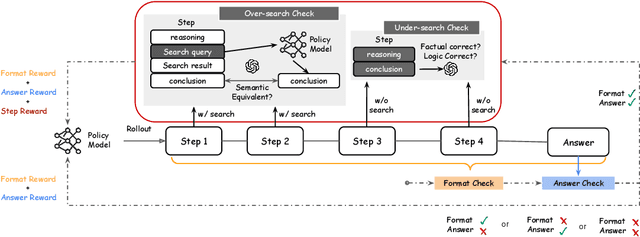
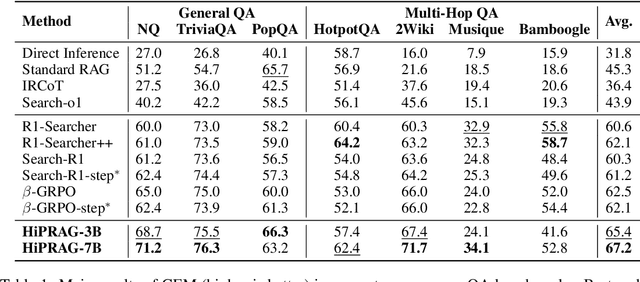
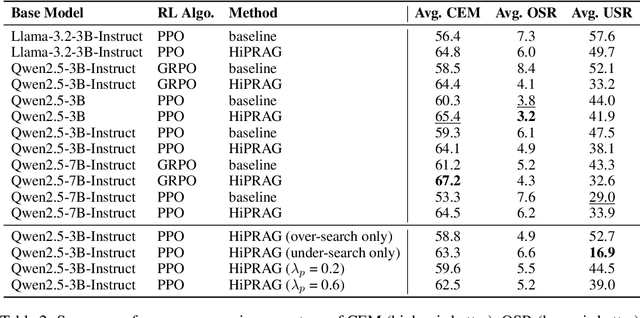
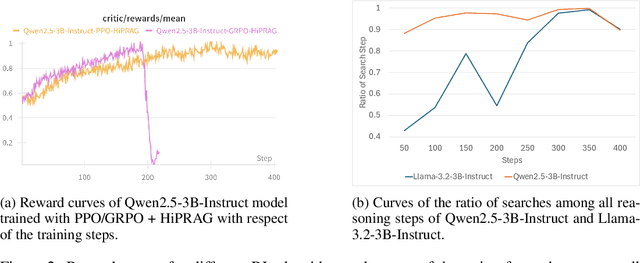
Abstract:Agentic RAG is a powerful technique for incorporating external information that LLMs lack, enabling better problem solving and question answering. However, suboptimal search behaviors exist widely, such as over-search (retrieving information already known) and under-search (failing to search when necessary), which leads to unnecessary overhead and unreliable outputs. Current training methods, which typically rely on outcome-based rewards in a RL framework, lack the fine-grained control needed to address these inefficiencies. To overcome this, we introduce Hierarchical Process Rewards for Efficient agentic RAG (HiPRAG), a training methodology that incorporates a fine-grained, knowledge-grounded process reward into the RL training. Our approach evaluates the necessity of each search decision on-the-fly by decomposing the agent's reasoning trajectory into discrete, parsable steps. We then apply a hierarchical reward function that provides an additional bonus based on the proportion of optimal search and non-search steps, on top of commonly used outcome and format rewards. Experiments on the Qwen2.5 and Llama-3.2 models across seven diverse QA benchmarks show that our method achieves average accuracies of 65.4% (3B) and 67.2% (7B). This is accomplished while improving search efficiency, reducing the over-search rate to just 2.3% and concurrently lowering the under-search rate. These results demonstrate the efficacy of optimizing the reasoning process itself, not just the final outcome. Further experiments and analysis demonstrate that HiPRAG shows good generalizability across a wide range of RL algorithms, model families, sizes, and types. This work demonstrates the importance and potential of fine-grained control through RL, for improving the efficiency and optimality of reasoning for search agents.
Cross-channel Perception Learning for H&E-to-IHC Virtual Staining
Jun 09, 2025



Abstract:With the rapid development of digital pathology, virtual staining has become a key technology in multimedia medical information systems, offering new possibilities for the analysis and diagnosis of pathological images. However, existing H&E-to-IHC studies often overlook the cross-channel correlations between cell nuclei and cell membranes. To address this issue, we propose a novel Cross-Channel Perception Learning (CCPL) strategy. Specifically, CCPL first decomposes HER2 immunohistochemical staining into Hematoxylin and DAB staining channels, corresponding to cell nuclei and cell membranes, respectively. Using the pathology foundation model Gigapath's Tile Encoder, CCPL extracts dual-channel features from both the generated and real images and measures cross-channel correlations between nuclei and membranes. The features of the generated and real stained images, obtained through the Tile Encoder, are also used to calculate feature distillation loss, enhancing the model's feature extraction capabilities without increasing the inference burden. Additionally, CCPL performs statistical analysis on the focal optical density maps of both single channels to ensure consistency in staining distribution and intensity. Experimental results, based on quantitative metrics such as PSNR, SSIM, PCC, and FID, along with professional evaluations from pathologists, demonstrate that CCPL effectively preserves pathological features, generates high-quality virtual stained images, and provides robust support for automated pathological diagnosis using multimedia medical data.
From Reasoning to Learning: A Survey on Hypothesis Discovery and Rule Learning with Large Language Models
May 28, 2025Abstract:Since the advent of Large Language Models (LLMs), efforts have largely focused on improving their instruction-following and deductive reasoning abilities, leaving open the question of whether these models can truly discover new knowledge. In pursuit of artificial general intelligence (AGI), there is a growing need for models that not only execute commands or retrieve information but also learn, reason, and generate new knowledge by formulating novel hypotheses and theories that deepen our understanding of the world. Guided by Peirce's framework of abduction, deduction, and induction, this survey offers a structured lens to examine LLM-based hypothesis discovery. We synthesize existing work in hypothesis generation, application, and validation, identifying both key achievements and critical gaps. By unifying these threads, we illuminate how LLMs might evolve from mere ``information executors'' into engines of genuine innovation, potentially transforming research, science, and real-world problem solving.
PathVLM-R1: A Reinforcement Learning-Driven Reasoning Model for Pathology Visual-Language Tasks
Apr 12, 2025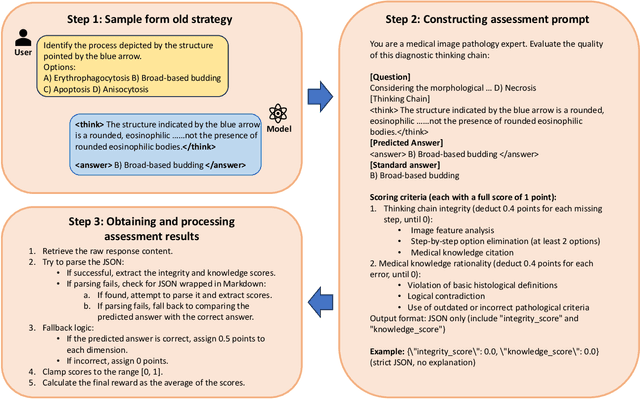

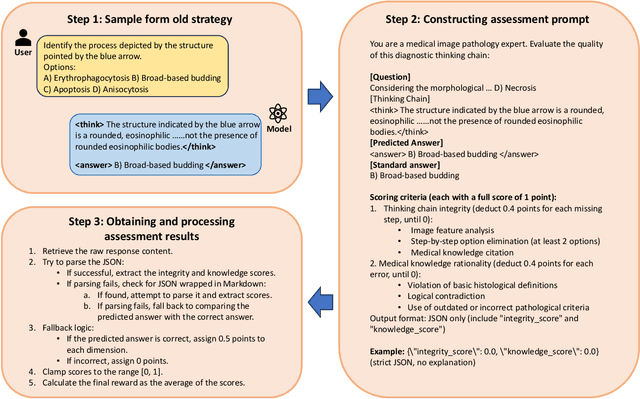

Abstract:The diagnosis of pathological images is often limited by expert availability and regional disparities, highlighting the importance of automated diagnosis using Vision-Language Models (VLMs). Traditional multimodal models typically emphasize outcomes over the reasoning process, compromising the reliability of clinical decisions. To address the weak reasoning abilities and lack of supervised processes in pathological VLMs, we have innovatively proposed PathVLM-R1, a visual language model designed specifically for pathological images. We have based our model on Qwen2.5-VL-7B-Instruct and enhanced its performance for pathological tasks through meticulously designed post-training strategies. Firstly, we conduct supervised fine-tuning guided by pathological data to imbue the model with foundational pathological knowledge, forming a new pathological base model. Subsequently, we introduce Group Relative Policy Optimization (GRPO) and propose a dual reward-driven reinforcement learning optimization, ensuring strict constraint on logical supervision of the reasoning process and accuracy of results via cross-modal process reward and outcome accuracy reward. In the pathological image question-answering tasks, the testing results of PathVLM-R1 demonstrate a 14% improvement in accuracy compared to baseline methods, and it demonstrated superior performance compared to the Qwen2.5-VL-32B version despite having a significantly smaller parameter size. Furthermore, in out-domain data evaluation involving four medical imaging modalities: Computed Tomography (CT), dermoscopy, fundus photography, and Optical Coherence Tomography (OCT) images: PathVLM-R1's transfer performance improved by an average of 17.3% compared to traditional SFT methods. These results clearly indicate that PathVLM-R1 not only enhances accuracy but also possesses broad applicability and expansion potential.
Wizard of Shopping: Target-Oriented E-commerce Dialogue Generation with Decision Tree Branching
Feb 03, 2025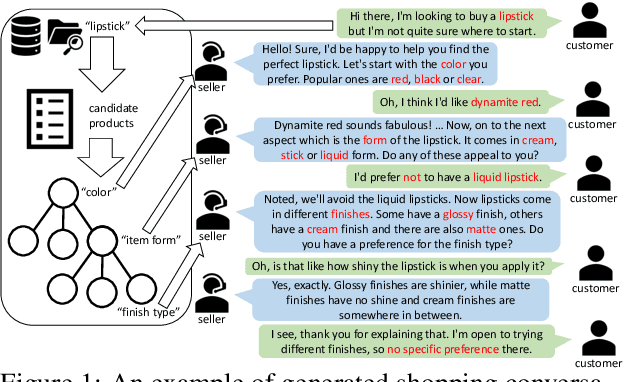

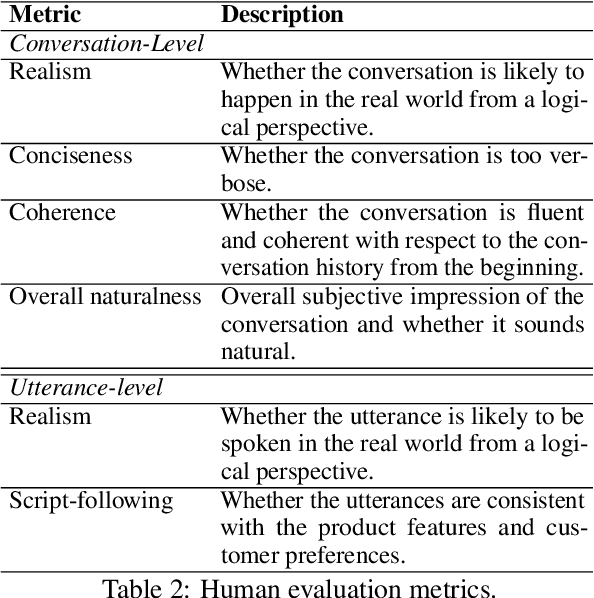

Abstract:The goal of conversational product search (CPS) is to develop an intelligent, chat-based shopping assistant that can directly interact with customers to understand shopping intents, ask clarification questions, and find relevant products. However, training such assistants is hindered mainly due to the lack of reliable and large-scale datasets. Prior human-annotated CPS datasets are extremely small in size and lack integration with real-world product search systems. We propose a novel approach, TRACER, which leverages large language models (LLMs) to generate realistic and natural conversations for different shopping domains. TRACER's novelty lies in grounding the generation to dialogue plans, which are product search trajectories predicted from a decision tree model, that guarantees relevant product discovery in the shortest number of search conditions. We also release the first target-oriented CPS dataset Wizard of Shopping (WoS), containing highly natural and coherent conversations (3.6k) from three shopping domains. Finally, we demonstrate the quality and effectiveness of WoS via human evaluations and downstream tasks.
Can video generation replace cinematographers? Research on the cinematic language of generated video
Dec 16, 2024



Abstract:Recent advancements in text-to-video (T2V) generation have leveraged diffusion models to enhance the visual coherence of videos generated from textual descriptions. However, most research has primarily focused on object motion, with limited attention given to cinematic language in videos, which is crucial for cinematographers to convey emotion and narrative pacing. To address this limitation, we propose a threefold approach to enhance the ability of T2V models to generate controllable cinematic language. Specifically, we introduce a cinematic language dataset that encompasses shot framing, angle, and camera movement, enabling models to learn diverse cinematic styles. Building on this, to facilitate robust cinematic alignment evaluation, we present CameraCLIP, a model fine-tuned on the proposed dataset that excels in understanding complex cinematic language in generated videos and can further provide valuable guidance in the multi-shot composition process. Finally, we propose CLIPLoRA, a cost-guided dynamic LoRA composition method that facilitates smooth transitions and realistic blending of cinematic language by dynamically fusing multiple pre-trained cinematic LoRAs within a single video. Our experiments demonstrate that CameraCLIP outperforms existing models in assessing the alignment between cinematic language and video, achieving an R@1 score of 0.81. Additionally, CLIPLoRA improves the ability for multi-shot composition, potentially bridging the gap between automatically generated videos and those shot by professional cinematographers.
Identifying High Consideration E-Commerce Search Queries
Oct 17, 2024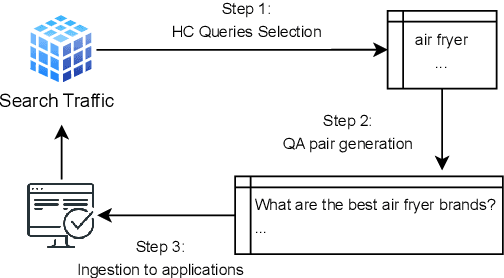
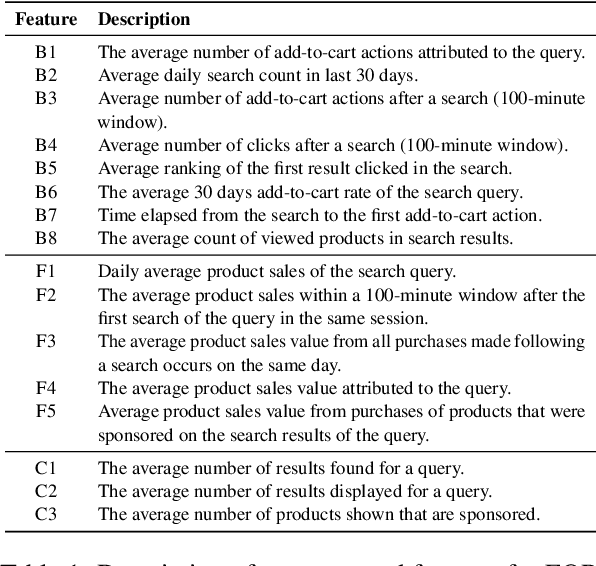
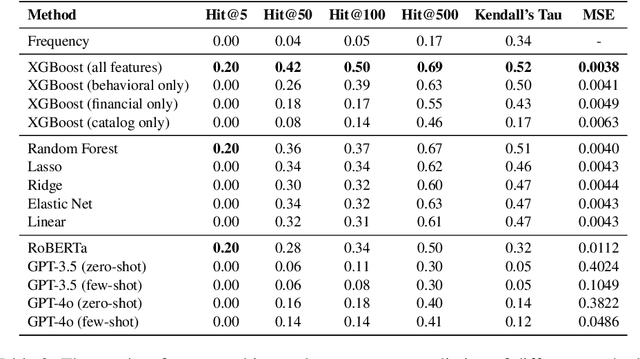

Abstract:In e-commerce, high consideration search missions typically require careful and elaborate decision making, and involve a substantial research investment from customers. We consider the task of identifying High Consideration (HC) queries. Identifying such queries enables e-commerce sites to better serve user needs using targeted experiences such as curated QA widgets that help users reach purchase decisions. We explore the task by proposing an Engagement-based Query Ranking (EQR) approach, focusing on query ranking to indicate potential engagement levels with query-related shopping knowledge content during product search. Unlike previous studies on predicting trends, EQR prioritizes query-level features related to customer behavior, finance, and catalog information rather than popularity signals. We introduce an accurate and scalable method for EQR and present experimental results demonstrating its effectiveness. Offline experiments show strong ranking performance. Human evaluation shows a precision of 96% for HC queries identified by our model. The model was commercially deployed, and shown to outperform human-selected queries in terms of downstream customer impact, as measured through engagement.
Personalized Knowledge Tracing through Student Representation Reconstruction and Class Imbalance Mitigation
Sep 10, 2024



Abstract:Knowledge tracing is a technique that predicts students' future performance by analyzing their learning process through historical interactions with intelligent educational platforms, enabling a precise evaluation of their knowledge mastery. Recent studies have achieved significant progress by leveraging powerful deep neural networks. These models construct complex input representations using questions, skills, and other auxiliary information but overlook individual student characteristics, which limits the capability for personalized assessment. Additionally, the available datasets in the field exhibit class imbalance issues. The models that simply predict all responses as correct without substantial effort can yield impressive accuracy. In this paper, we propose PKT, a novel approach for personalized knowledge tracing. PKT reconstructs representations from sequences of interactions with a tutoring platform to capture latent information about the students. Moreover, PKT incorporates focal loss to improve prioritize minority classes, thereby achieving more balanced predictions. Extensive experimental results on four publicly available educational datasets demonstrate the advanced predictive performance of PKT in comparison with 16 state-of-the-art models. To ensure the reproducibility of our research, the code is publicly available at https://anonymous.4open.science/r/PKT.
IDEA: Enhancing the rule learning ability of language agent through Induction, DEuction, and Abduction
Aug 19, 2024Abstract:While large language models (LLMs) have been thoroughly evaluated for deductive and inductive reasoning, their proficiency in abductive reasoning and holistic rule learning in interactive environments remains less explored. This work introduces RULEARN, a novel benchmark specifically designed to assess the rule-learning ability of LLMs in interactive settings. In RULEARN, agents interact with the environment to gather observations and discern patterns, using these insights to solve problems. To further enhance the rule-learning capabilities of LLM agents within this benchmark, we propose IDEA agent, which integrates Induction, Deduction, and Abduction processes. IDEA agent refines this approach by leveraging a structured reasoning sequence: generating hypotheses through abduction, testing them via deduction, and refining them based on induction feedback. This sequence enables agents to dynamically establish and apply rules, mimicking human-like reasoning processes. Our evaluation of five representative LLMs indicates that while these models can generate plausible initial hypotheses, they often struggle with strategic interaction within the environment, effective incorporation of feedback, and adaptive refinement of their hypotheses. IDEA agent demonstrates significantly improved performance on the RULEARN benchmark, offering valuable insights for the development of agents capable of human-like rule-learning in real-world scenarios. We will release our code and data.
 Add to Chrome
Add to Chrome Add to Firefox
Add to Firefox Add to Edge
Add to Edge